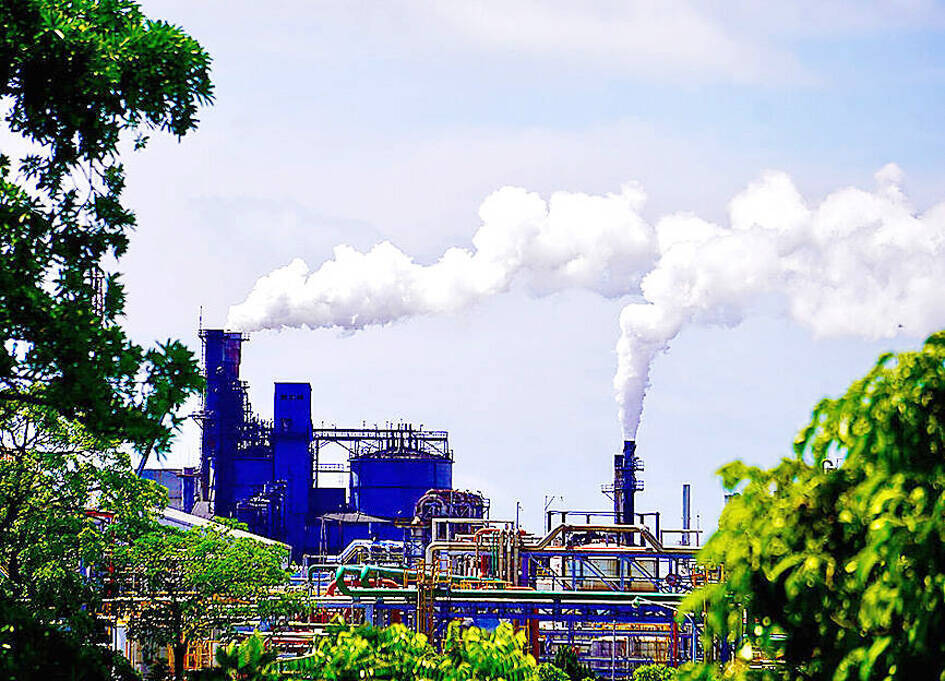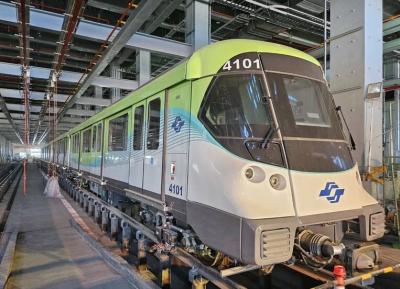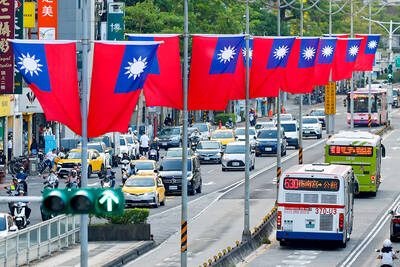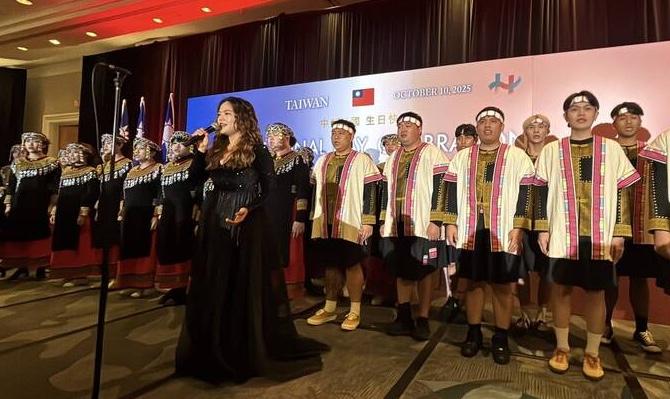The Ministry of Environment would learn from Germany’s experience and test Taiwan’s emissions trading system (ETS) in the second half of next year, Minister of Environment Peng Chi-ming (彭?明) told an event at National Taiwan Normal University in Taipei on Wednesday.
The government has changed its mindset from “subsidizing” to “investing in” the sustainability sector and circular economy, Peng said in a speech on the government’s carbon reduction roadmap and sustainable development policies.
Following the implementation of carbon fees at the start of this year, the ministry’s next focus is to establish an ETS, he said, adding that a task force would visit Germany to learn more about what has been done there.

Photo: CNA
“The German government would assist Taiwan in building the ETS based on the cap-and-trade principle,” Peng said.
The goal is to try a dual-track approach that integrates carbon fees and the ETS to the domestic carbon pricing mechanism from the second half of next year, he added.
“Each country thinks differently about pricing for carbon emissions,” Peng said.
For example, Taiwan levies a carbon fee of up to NT$300 per tonne, while South Korea sets a price lower than Taiwan, but has introduced an ETS, he said.
Japan has adopted a dual-track system, while Singapore’s carbon fees are about the equivalent of NT$600 per tonne, Peng said, adding that the EU’s carbon fees range from 60 to 80 euros (US$68.12 to US$90.82).
Taiwan’s carbon fees — which can be as low as NT$20 per tonne for industries with high carbon leakage risk — have been criticized by environmental groups for being “cheaper than coke.”
However, implementation was a starting point for the system to be accepted and developed, Peng said.
“Greenflation — inflation caused by the green transition — would ensue if the government set a carbon fee of NT$3,000” per tonne, he said.
The ETS to be tested next year is important, as it would allow the market to determine carbon prices, Peng said.
“For example, Taiwan Semiconductor Manufacturing Co’s [TSMC] annual carbon emissions are about 10 million tonnes and another 2 million tonnes would be required if it is to build a 1-nanometer chip fab,” he said.
While TSMC would have to buy 2 million tonnes of carbon offsets from the market, enterprises with advanced net zero technology to generate carbon credits could sell them to TSMC for NT$10,000 per tonne, Peng said.
“That would create momentum for the domestic sustainability industrial chains, especially the green economy,” he said, adding that such market-driven value networks would not impose a financial burden on the public.
The ministry aims for Taiwan to be second only to Japan among Asian countries in terms of carbon reduction goals, Peng said.
While Japan targets a 60 percent carbon cut by 2035 from its emission peak in 2013, Taiwan aims to reduce emissions by 43 to 47 percent from its peak in 2007, he said.
Twenty action plans to reduce emissions have been set up among the six major sectors — energy, manufacturing, residential and commercial, transportation, agriculture and environment, he said.
For example, the energy sector would embark on decarbonization of the power grid by decreasing coal-fired power use to 20 percent in 2030 from 31.1 percent last year, while boosting the use of green power to 30 percent from 11.9 percent and gas-fired power to 49 percent from 47.2 percent, he said, adding that the green power target remains challenging due to disagreements among stakeholders.
Peng said he is open to the use of nuclear energy, but it was excluded from planning given that restarting nuclear power plants could cost billions of US dollars, according to an International Energy Agency report.
Asked about the potential establishment and development of Taiwan’s carbon border adjustment mechanism, Peng said that the government would proceed with discussions if the EU announces more details on its mechanism in July or August.

The Taipei Mass Rapid Transit (MRT) Wanda-Zhonghe Line is 81.7 percent complete, with public opening targeted for the end of 2027, New Taipei City Mayor Hou You-yi (侯友宜) said today. Surrounding roads are to be open to the public by the end of next year, Hou said during an inspection of construction progress. The 9.5km line, featuring nine underground stations and one depot, is expected to connect Chiang Kai-shek Memorial Hall Station to Chukuang Station in New Taipei City’s Jhonghe District (中和). All 18 tunnels for the line are complete, while the main structures of the stations and depot are mostly finished, he

Taipei is to implement widespread road closures around Taipei 101 on Friday to make way for large crowds during the Double Ten National Day celebration, the Taipei Department of Transportation said. A four-minute fireworks display is to be launched from the skyscraper, along with a performance by 500 drones flying in formation above the nearby Nanshan A21 site, starting at 10pm. Vehicle restrictions would occur in phases, they said. From 5pm to 9pm, inner lanes of Songshou Road between Taipei City Hall and Taipei 101 are to be closed, with only the outer lanes remaining open. Between 9pm and 9:40pm, the section is

The first global hotel Keys Selection by the Michelin Guide includes four hotels in Taiwan, Michelin announced yesterday. All four received the “Michelin One Key,” indicating guests are to experience a “very special stay” at any of the locations as the establishments are “a true gem with personality. Service always goes the extra mile, and the hotel provides much more than others in its price range.” Of the four hotels, three are located in Taipei and one in Taichung. In Taipei, the One Key accolades were awarded to the Capella Taipei, Kimpton Da An Taipei and Mandarin Oriental Taipei. Capella Taipei was described by

The Taipei Economic and Cultural Office in Vancouver, Canada, on Saturday hosted a reception to celebrate Double Ten National Day. Conservative Canadian lawmaker Marc Dalton called Taiwan a “beacon of courage and resilience in the face of rising authoritarianism,” according to a post on the Taiwan in Vancouver Facebook page. Also in attendance were fellow conservative caucus members Tako Van Popta and Chak Au, who said that Taiwan plays an “indispensable role” in ensuring global peace, prosperity and stability due to its strategic position in the Indo-Pacific region, it said. Canadian lawmaker Michael Cooper also recorded a message wishing Taiwan a